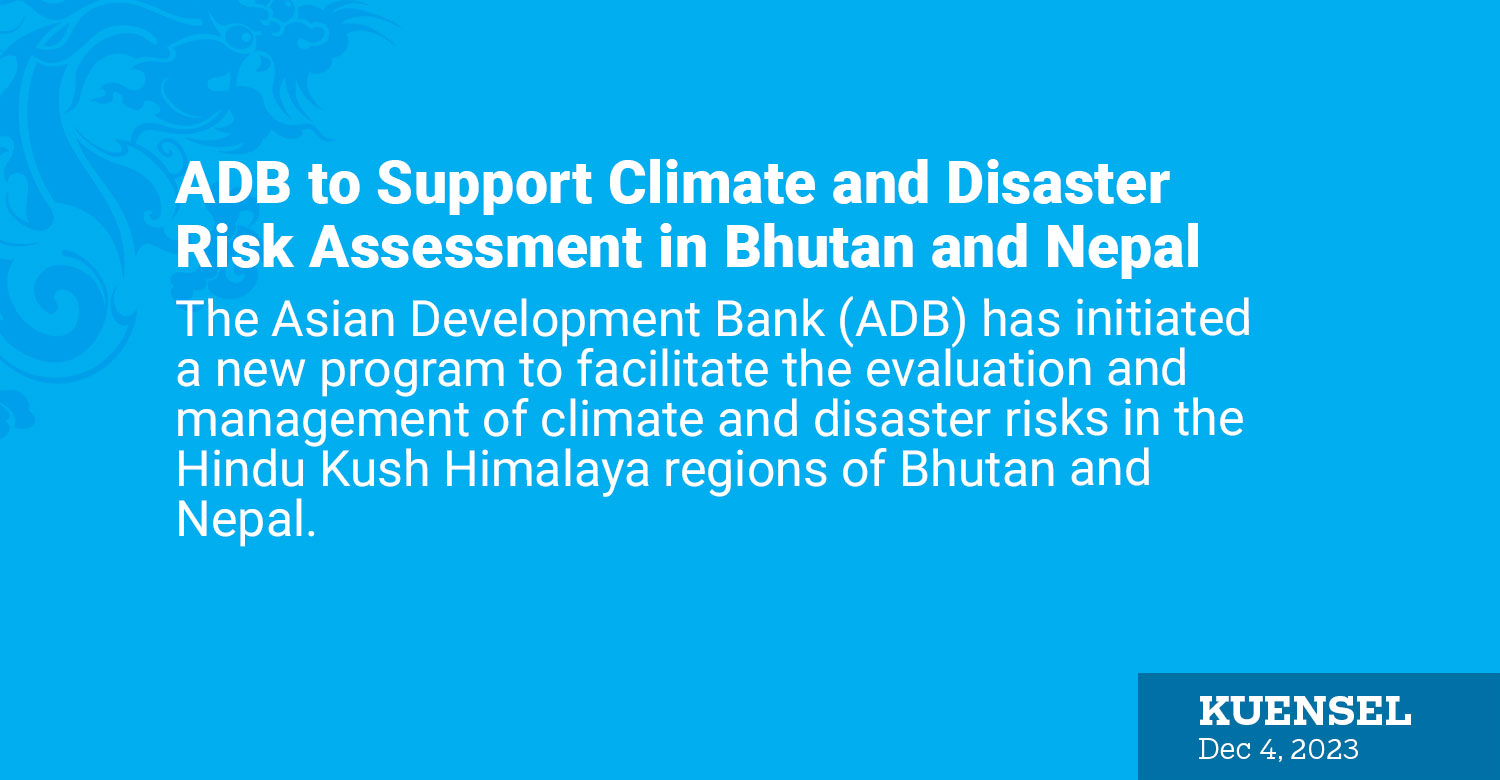KP Sharma
The Asian Development Bank (ADB) has initiated a new program to facilitate the evaluation and management of climate and disaster risks in the Hindu Kush Himalaya regions of Bhutan and Nepal.
According to ADB’s news release, the program aims to conduct a comprehensive analysis of multi-hazard risks, encompassing landslides, earthquakes, floods, and glacier lake outbursts.
The objective is to enhance the two governments’ capacity to conduct risk assessments in key river basins.
“These assessments will be used to develop early warning systems and risk management options for future infrastructure development,” stated the press release.
The Hindu Kush Himalayas play a crucial role in sustaining the livelihoods of 240 million people in the mountains and over 1.6 billion people downstream, contributing to 10 major rivers. “The region is warming faster than the global average, and if global temperature rises hit three degrees Celsius, 75 percent of glaciers in Bhutan and Nepal could melt by the end of this century.”
This scenario could stress access to water, threaten food and energy security, and result in substantial biodiversity loss.
ADB’s president, Masatsugu Asakawa, expressed concern about climate change’s impact on the region and emphasized its critical role in the well-being and economic security of over a billion people.
He stated that the initiative would provide essential information to Bhutan and Nepal, enabling effective climate adaptation crucial for managing climate risks.
The news release highlighted that economic losses from disasters in the Hindu Kush region amounted to USD 45 billion from 1985 to 2014, surpassing those of any mountain region. The increasing frequency and intensity of disasters have further elevated economic losses and the number of people affected.
“We must urgently ensure that finance is flowing into climate adaptation projects,” said ADB’s principal economist Declan Magee.
He stressed the need for a high-quality assessment of climate disaster risks that accounts for multiple hazards with transboundary impacts.
The assistance aims to help governments, private sectors, and local communities understand the risks they face, enabling informed decisions on disaster risk reduction, adaptation measures, and risk transfer solutions, including insurance. “The technical assistance will set the stage for advancing knowledge across the Hindu Kush Himalaya region on climate-resilient investment planning, development, and risk management.”
ADB has committed to providing USD 100 billion in climate financing from its own resources from 2019 to 2030, with USD 34 billion allocated for adaptation. In 2022, ADB committed USD 7.1 billion in climate financing, including USD 4.3 billion for mitigation and USD 2.8 billion for adaptation, mobilising an additional USD 548 million in climate finance from the private sector last year.


